How We Organize: Stopping Polluting Factory Farms in Oregon
Published Apr 3, 2024
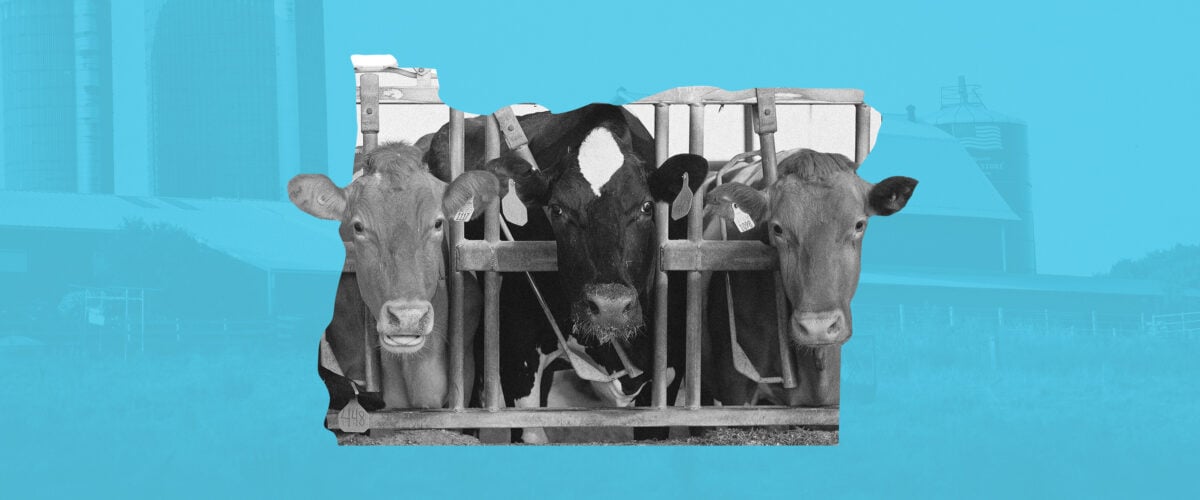
Last year in Oregon, we helped pass the first bill regulating factory farms in years. Our Oregon team breaks down the strategy and tactics that contributed to this victory.
Before I came to Food & Water Watch, I didn’t know much about organizing. Like many folks, I supported and donated to organizations and celebrated their victories. But I always wondered, how did it happen? What were the “nuts and bolts” of building a win?
Since joining Food & Water Watch, I’ve learned a lot about exactly that. Again and again, Food & Water Watch overcomes big money and long odds. We work with communities to fight corporate greed and pollution, while also moving the needle on the biggest food, water, and climate issues of our time.
In this series, “How We Organize,” volunteers and organizers on the front lines of these issues peel back the curtain and talk shop, detailing all those nuts and bolts. If you’ve ever wondered how to organize a winning campaign, you’re in the right place.
Earlier this week, we walked through last year’s “Save the Hudson” win in New York. Today, we’re covering our campaign in Oregon against factory farms.
Winning Big Against Polluting Factory Farms
Since 2017, Food & Water Watch has called on Oregon to place a moratorium on mega-dairies, and we expanded that call to all factory farms in 2023. It was clear they were taking a harsh toll on local health, environments, and economies — and they needed to be stopped.
For example, mega-dairies use unimaginable amounts of water and pollute it, too. They’re a major contributor to the state’s nitrate pollution crisis, which has gotten so dire that one county declared a state of emergency.
Last year, our Oregon team won a monumental victory on this front. With the Stand Up to Factory Farms (SUFF) coalition, we stopped plans for a massive Easterday mega-dairy. This came after the coalition successfully shut down a different mega-dairy on the same property. That one, Lost Valley Farms, had been the state’s second-largest dairy.
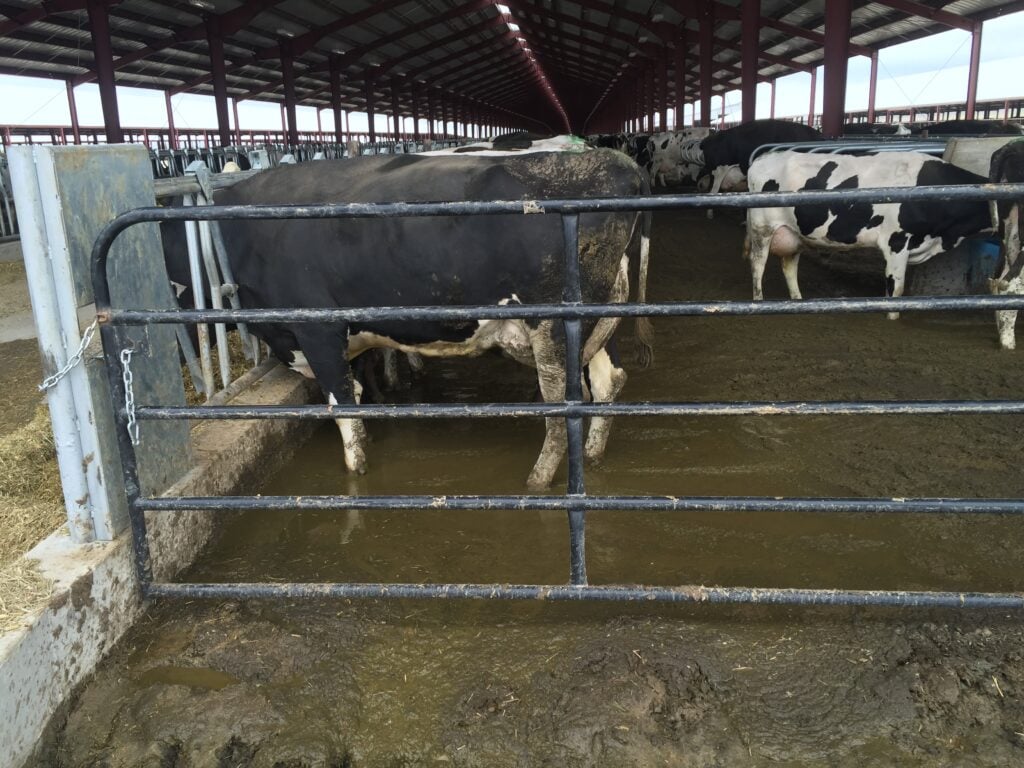
Our tireless watchdogging, vocal opposition, and legal action made all of this possible.
These fights also helped draw attention to the problems of factory farms in Oregon, helping us toward another coalition win in the state legislature. After the Stand Up to Factory Farms coalition introduced a bill to place a moratorium on new and expanding factory farms, the state legislature passed SB 85 — an important step to protect communities from the harms of these polluting facilities.
In this interview, we get the details on our legislative efforts from Claire Gates, Food & Water Team Oregon Volunteer Leader, and Mikindra Morin, our Factory Farm Organizing Manager. This interview has been edited for clarity and length.
How Our Fight and Victory for a Factory Farm Bill Impacts Oregonians
Mia: Can you talk about the significance of SB 85, and how it contributes to our ultimate goal of passing a moratorium and stopping factory farms in Oregon?
Mikindra: I think one of the biggest things it did was allow us local control in where factory farms can be built, so it allowed counties to provide setbacks for any factory farm that would come in.
One county already, Linn County, has taken advantage of that. They require one-mile setbacks now from any land that has a residence on it for factory farms, which really cuts down on where you can build one.
It also really strengthened the regulatory requirements to make sure these factory farms have to get water rights and [regulations on] how they use their water. Oregon has some lenient regulatory options, and so it’s going to continue to be a target for these out-of-state corporations that want to set up shop in Oregon.
[With SB 85,] we really built a lot of awareness around this issue. I think legislators understood that Oregonians care about this because of air, water, and climate. There are many different ways in which factory farms harm Oregon and any community that they move into.
Claire: There hasn’t been a bill passed in years, and although it was not the bill we wanted, it certainly helped keep factory farms from coming in temporarily.
Mikindra: It was a really great first step, but there are definitely more things that need to be done.
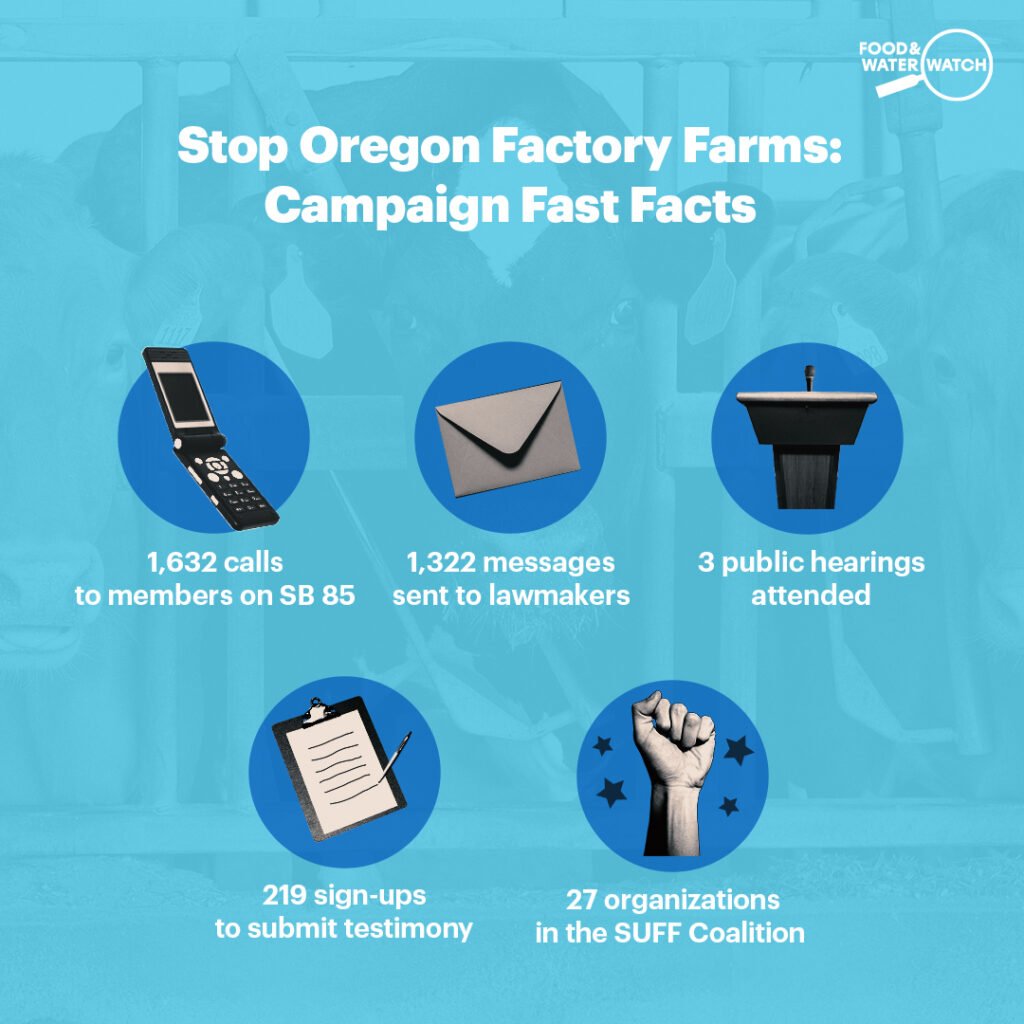
Mia: How did it feel to be part of a team that made these wins happen?
Claire: It felt really good! It felt like a community. We all had the same goals. We became friends. A lot of us see each other outside of the Food & Water Watch volunteer organization.
It just makes me feel like I’m doing something other than writing a check and sending it in, which is easy to do and it’s important to do that, but to actually be able to feel like I made a difference — I’ve written letters to the editor, I’ve written several letters to my representatives, I’ve made phone calls. I feel like I’m doing something.
The Many Tactics and Tenacity That Built a Victory
Mia: There was so much work that went into this campaign. Can you talk about particularly memorable or effective tactics, and how you planned and executed them?
Claire: One thing we did was an art build. We had an in-person gathering with as many volunteers as we could, and it was quite a few. And we made posters. People were so creative. It was just a lot of fun. We helped each other. We laughed a lot; got to know each other.
And then we took those posters to the Capitol, to some of the first hearings [of the legislative session]. It was more than just being there; we were there with signs, and signs that got the attention of the press, and anybody who was there watching.
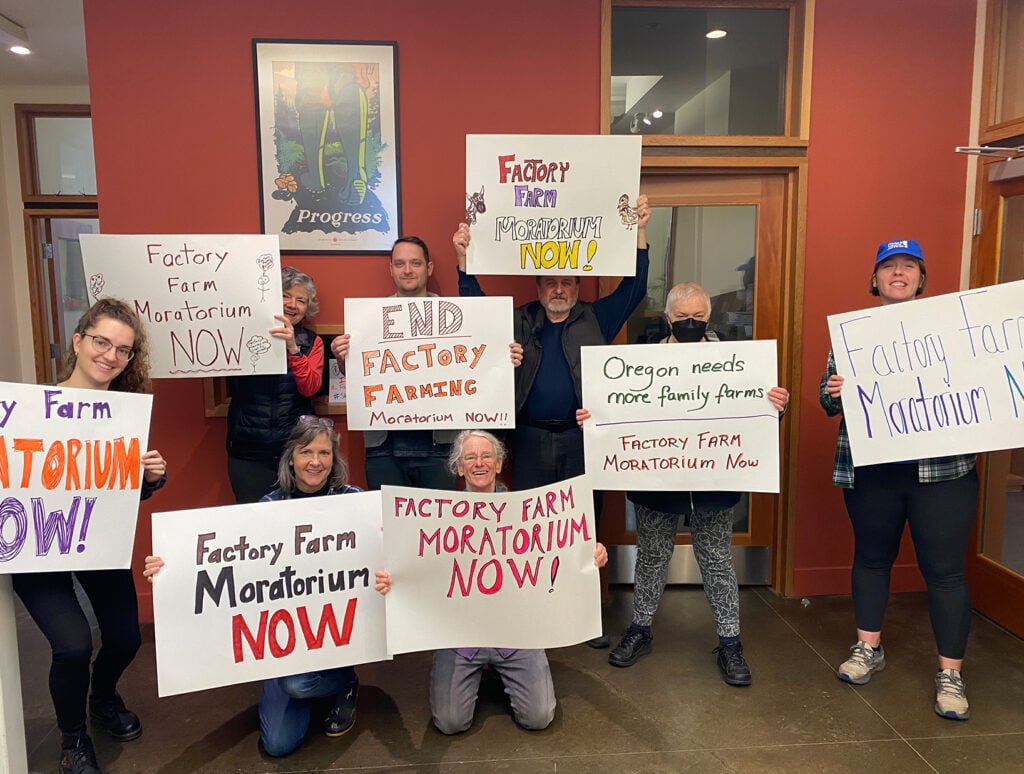
Mikindra: There was a hearing where they said we would only have an hour, and about a hundred people signed up. They let people speak in the room first, and then went to online [participants].
We saw this as an opportunity to cede our time, because the people online are the ones in Eastern Oregon, where many of these dairies are. There were about ten people who said “We cede our time” to make sure that frontline communities had a voice.
That was a really powerful way to show that the communities impacted by this aren’t necessarily able to drive five hours to Salem to be [at the hearing], and that we were going to make space for them. And they had really powerful testimony as well.
Claire: I think it showed how all the organizations are working together. We don’t just want to get on our soapbox. We want the people who are impacted the most to have an opportunity.
Mikindra: We also did weekly action meetings where we would give a brief training, then spend time together actually taking the action. So we did hand-written letters to your legislator, we did phone banking, and we did “How to tell the story of why you care about factory farms,” to name a few.
We did this almost every week throughout the session and probably had 15 to 20 people on each one.
Claire: Other things that we’ve done are being at farmers’ markets and talking to people who don’t even know there are factory farms in the state. I really enjoyed talking to people one-on-one, and it’s amazing how people want to know this information.
The more people we can bring on board to talk to their legislators and be aware of what’s going on, the better our chances are of making a difference in the next session.
This is the first year that [a bill has] gone this far. In the past I’d worked on the campaign, and it hadn’t even made it out of the committee. Two times, in the legislative sessions, I don’t think it made it out of the committee.
But as we’ve said, we don’t give up. We’re not going to give up. And I think having a single focus has helped me, because people want to save the world and do everything, but you’ve got to focus on one thing at a time.
That’s what Food & Water Watch is really doing in Oregon, focusing on a moratorium, and we keep marching toward that. That will be a big, big step to help many other things.
Mia: Our work to stop factory farms in Oregon includes many different angles, from legal work to original research. Why do we pursue all these different angles, and how do they support each other?
Mikindra: Specifically for the fight in Oregon, this coalition formed around Lost Valley, which ended up getting shut down. Then Easterday came in and bought it, and they already had groundwater violations before they even had cows on the ground.
Our legal team and our communications team continued to keep that top of mind for Oregonians and for legislators by keeping it in the press; by doing information requests1Our legal team submitted these requests to state agencies, which in this case had data on the water quality on the Easterday property. that allowed us to see what that contamination looked like.
And then, of course, the organizing team brings in training for volunteers and wonderful people like Claire who show up and put pressure on their own elected officials.
We all worked together in making sure that the issues continue to stay in the news, that people continue to know about them. And thanks to our research team, too, we really have the facts to back up the arguments that we’re making for why we need a moratorium on factory farms.
At the end of the day, we are building political power. All of these approaches together allow us to deploy that power in multiple ways to move our decision-makers. By using legal, communication, research, and volunteer tactics, we use every tool we have to grow support for a moratorium on new and expanding factory farms in Oregon.
Claire: I think this shows that one approach is not enough. If it were just volunteers out there writing letters and we didn’t have the research team, we didn’t have the legal team, we didn’t have others, I don’t think it would do much good. It has to be multi-faceted. It has to approach them from many different levels to speak to different people.
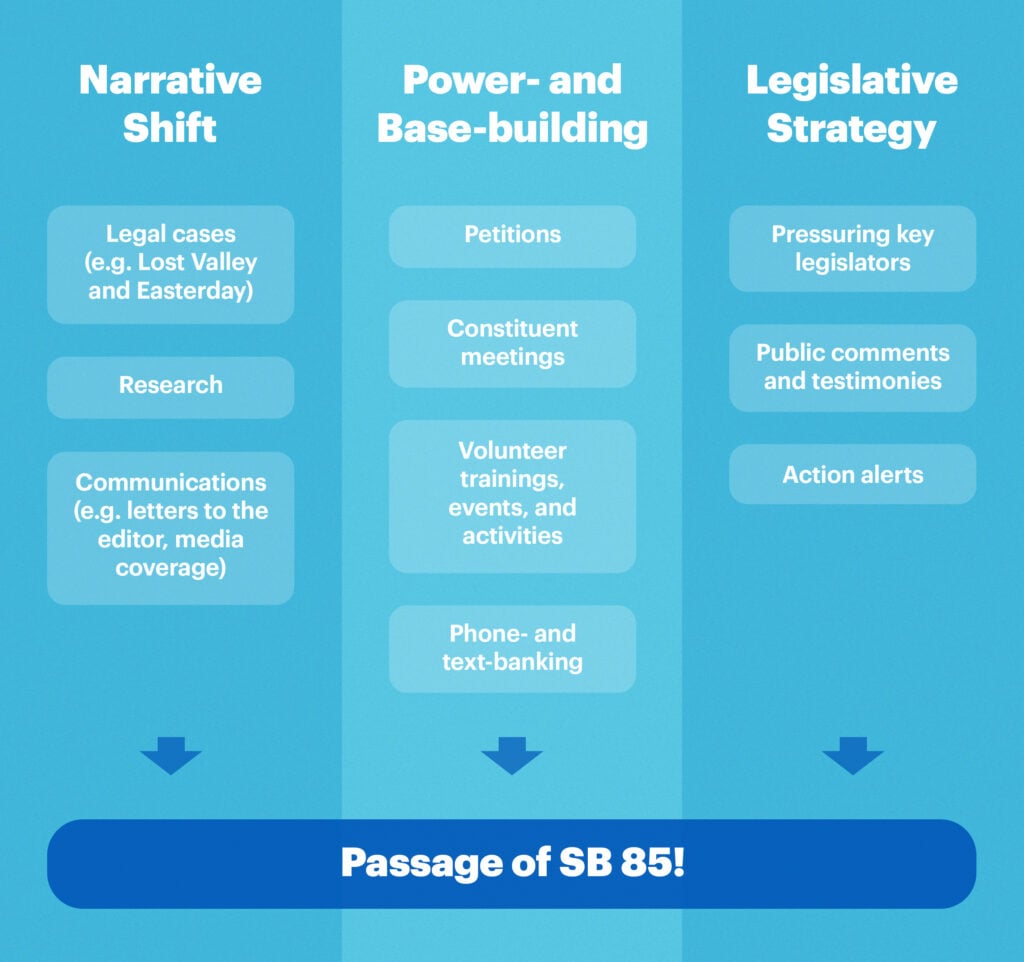
Stronger Together: The Power of Partnering in a Coalition
Mia: In many of Food & Water Watch’s campaigns, we work as part of a broader coalition in which diverse groups come together toward a common goal. Can you talk about the Stand Up to Factory Farms coalition in Oregon and why it was essential to this win?
Mikindra: The Stand Up to Factory Farms coalition is fantastic. We started with just ten members as a steering committee that was fighting Lost Valley farms.
I think what makes it powerful is that it’s made up of national, state, and local organizations, and so some folks are talking about climate change, some are interested in animal welfare or public health; some are really focused on air quality, some are really focused on water quality, some are really focused on water quantity.
When you bring all of this together, the expertise really boosts what we can do as a coalition. It allows us to bring in constituents that are focused on those issues and care about them. The more people we bring in, the more power we have.
Mia: Can you talk about what we bring to the coalition?
Claire: Food & Water Watch brings the grassroots part of it to the table. We have a volunteer network that reaches out to bring in volunteers; people who are supportive.
Mikindra: We’re so good at building political power. We have targets in the Senate that we think could use a bit more of a push from their constituents, and so we’re focusing on that at the same time that we’re also working with folks in Eastern Oregon and with the coalition. It’s really building up our power leading up to the 2025 session.
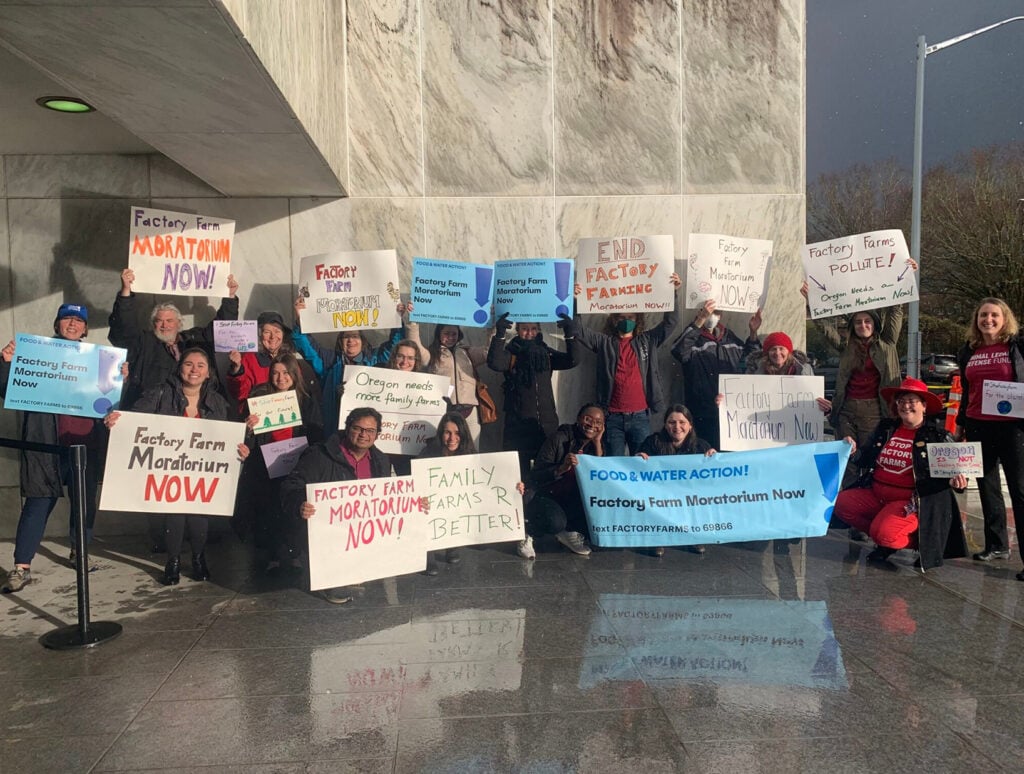
We’ll Keep Fighting Until All Oregonians Are Protected from Factory Farms
Mia: We’re coming off a big win; but as you said earlier, we still have a long way to go. What are the next steps for the Oregon team?
Claire: We’re going to have some screenings, two screenings of [the film] Right to Harm. I’m going to participate in a phone bank to invite people to come. We’re going to be tabling at farmers’ markets, we’re going to be talking to people everywhere we can.
Mikindra: People don’t actually know how close they live to a factory farm, so we’re doing a screening in Wilsonville of Right to Harm, and there are 14 factory farms in that county. And I’m sure a lot of people don’t even know that because they do tend to be in more rural areas.
Claire also helped another volunteer put together an awareness presentation that we can give at colleges, to anyone, and we’re doing trainings on how to give that presentation so that people can give it to any groups they’re already in — really trying to raise awareness around this issue over the next year.
Once the short session is over, [the coalition] will also start having constituent meetings with legislators, signing on cosponsors, and finding our bill sponsors for the year.
The way that we do that is through all of these things, like Claire was just saying, where we find enough people to put pressure on [lawmakers] to feel like they need to pass this bill.
Claire: We’re trying to get a moratorium bill passed [next year], and it’s going to take a lot of work to get people on board for that, because they’re going to say, “Well, we passed this bill last year, why do we need to do another one?”
It’s going to take more education but of the same sort. More people on board, more people putting pressure on their representatives, more awareness. I think the more education we have, the more likely we will be to get something done.
With your help, we can keep building power to protect Oregonians from factory farms!
Enjoyed this article?
Sign up for updates.
TO TOP
Endnotes


